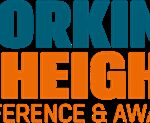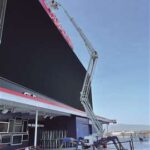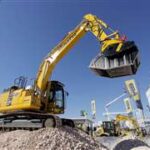⚠️ What Is Code 18 on a Genie GS-1930? (Hint: It’s a Bump in the Road—Literally)
You fire up your trusty Genie GS-1930. The batteries are charged, safety check is done, coffee in hand—and then:
Beep. Beep. CODE 18.
“Wait… what did I do now?”
Breathe easy. You’re not in trouble. But your lift just spotted something it doesn’t like: a pothole fault.
Let’s dig into what that means—and more importantly, how to get rolling again.
🧠 What Is Code 18, Really?
Genie Fault Code 18 = Pothole Protection Fault
It means the machine has detected an issue with the automatic pothole protection system—a key safety feature that prevents the lift from driving when the stabilizers (a.k.a. “pothole guards”) aren’t properly deployed.
Think of it as your lift saying:
“Hey, my legs aren’t all the way down—I’m not moving until we’re stable!”
🕳️ But… What Even Is Pothole Protection?
Great question.
The Genie GS-1930 has mechanical pothole guards underneath the chassis. When the platform raises, these steel “arms” extend downward. Their job is to:
-
Increase ground clearance contact
-
Prevent tipping if the machine drives over a depression or drop
-
Stabilize the base when elevated
If those guards don’t deploy properly—or if the system thinks they didn’t—Code 18 flashes up.
🛠️ Common Causes of Code 18
-
Debris under the machine
Sticks, rocks, or jobsite gunk can block the pothole arms. -
Damaged or bent guards
If they’ve been banged up over time, they might not deploy fully. -
Faulty limit switch
There’s a little sensor that checks whether the arms are extended. If it’s loose or dirty—it’ll throw the code. -
Out-of-level terrain
If the surface is too sloped, the guards may not engage cleanly.
🔧 How to Fix Code 18 (Like a Pro)
-
Lower the platform completely
Code 18 usually clears automatically when the lift is fully stowed. -
Inspect the pothole arms
-
Look underneath the machine
-
Are both arms fully deployed when elevated?
-
Any signs of damage or blockage?
-
-
Check for debris
Clear out dirt, gravel, or anything obstructing movement. -
Test the limit switches
Gently press and release them. Do they click freely? Are wires intact? -
Power cycle the machine
-
Turn it off, wait 10 seconds, turn it back on
-
Recheck for the code
-
-
Still stuck?
Time to call in the service techs. It could be a deeper electrical fault or a worn-out switch.
🧼 Pro Tip: Prevent It Before It Happens
-
Keep the undercarriage clean and clear
-
Don’t drive over large debris or into rough potholes at full speed
-
Make pothole guard inspection a daily checklist item
Trust us—Code 18 is much easier to prevent than to fix when you’re on a deadline.
🏁 Final Thought
Code 18 might sound dramatic, but it’s really your lift looking out for you.
It’s saying:
“I don’t feel stable. Fix that before I roll.”
And when a 2,400 lb machine refuses to budge until it’s safe—you should probably listen.
So the next time Genie flashes that “18,” smile and say,
“Thanks for looking out, buddy.”
Then grab your flashlight and take a peek underneath.




